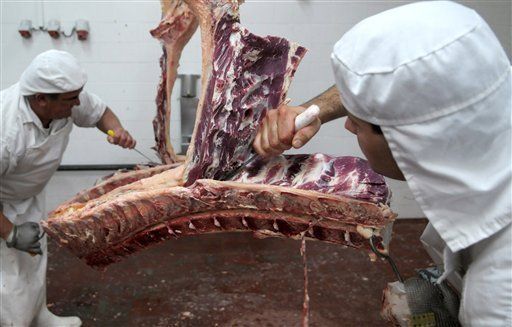
Kids and animals are a natural unit, and children are inherently and intuitively curious naturalists. They're sponges for knowledge, absorbing, retaining and using new information at astounding rates. We all know this, but often we forget when we're helping to develop their roles as future ambassadors with other animals, nature and ourselves. Some are also future leaders on whose spirit and good will many of us will depend. They will be other animals' and our voices, indeed, voices of the universe. So, it makes good sense to teach children well, to be role models, to infuse their education with kindness and compassion so that their decisions are founded on a deeply rooted, automatic reflex-like caring ethic. If we don't, they, we, other animals, human communities and environments will suffer.
Two recent studies further out knowledge of how kids "see" the world. In the first, a research project by Douglas Medin, Sandra Waxman and Jennie Woodring in the psychology department at Northwestern University and Karen Washinawatok of the Menominee Language and Culture Commission in Wisconsin, showed that there are cultural influences. These researchers reported,
while young urban children revealed a human-centered pattern of reasoning, the rural European-American and Native American children did not. Children's experience, including the extent of their day-to-day interactions with the natural world and their sensitivity to the belief systems of their communities, influences their reasoning about the natural world.
Furthermore,
the researchers noted that while children generally are taught in school that only plants and animals are alive, the traditional Menominee notion of "alive" includes natural inanimates, such as rocks and water, and may even include artifacts, depending on the purpose for which they were made.
The bottom line is that human-centered reasoning (an anthropocentric perspective) is not a universal phenomenon.
In another study, research also performed at Northwestern University by some of the same researchers showed that
Although 5-year-olds adopted an anthropocentric perspective (replicating earlier studies), 3-year-olds showed no hint of anthropocentrism. This outcome, considered in conjunction with recent cross-cultural evidence including Native American children, suggests a new model of development: Human-centered reasoning is not an obligatory starting point for development, as researchers and educators had previously assumed.
This has extremely important implications for science education, noted one of the researchers:
If we are to design more effective science curricula, then it is incumbent upon us to understand the diverse perspectives that even the very youngest children bring with them as they enter their classrooms.
In another study, research also performed at Northwestern University by some of the same researchers showed that
Although 5-year-olds adopted an anthropocentric perspective (replicating earlier studies), 3-year-olds showed no hint of anthropocentrism. This outcome, considered in conjunction with recent cross-cultural evidence including Native American children, suggests a new model of development: Human-centered reasoning is not an obligatory starting point for development, as researchers and educators had previously assumed.
This has extremely important implications for science education, noted one of the researchers:
If we are to design more effective science curricula, then it is incumbent upon us to understand the diverse perspectives that even the very youngest children bring with them as they enter their classrooms.
Now, consider the results of another recent study of human-animal interactions. A recent study showed that there is a link between slaughterhouses and brutal crime. University of Windsor criminology professor Amy Fitzgerald discovered as the number of slaughterhouse workers in a community increases, the local crime rate also increases. She also noted that the increase in crime couldn't be blamed on the nature of factory work itself.
While more research is needed, it seems that because slaughterhouse workers are dealing with living animals there is a loss of empathy. If there was more stringent legislation that protected food animals, and slaughterhouses also developed and strongly enforced more humane standards, might there be less of a problem? While it is impossible to make the life of a slaughterhouse animal border on anything that could be reasonably called "humane," Temple Grandin, who works to try to make the life of some slaughterhouse animals betterm noted in one of her early papers (Anthrozoos 1988) "... it is difficult to care about animals but be involved in killing them." So, perhaps it is simply not possible to work with animals in these settings and allow empathy to enter the picture. These are indeed complex issues that need to be studied in more detail.
But the problem remains a difficult one to sort out because, as Dr. Fitzgerald points out, "the etiology of the problem remains something of a chicken-and-egg puzzle. Do slaughterhouses desensitize workers to killing? Or, could the work attract people who are less sensitive to begin with?" And of course, we can ask why do we eat animals in the first place (see Ari Solomon's poignant blog about our weird eating habits).
Clearly, our interactions with other animals are challenging and frustrating and force us to come to terms with who we are and who "they" are. And, we can always do better and add more compassion to the world when it comes to our treatment of other animal beings.
